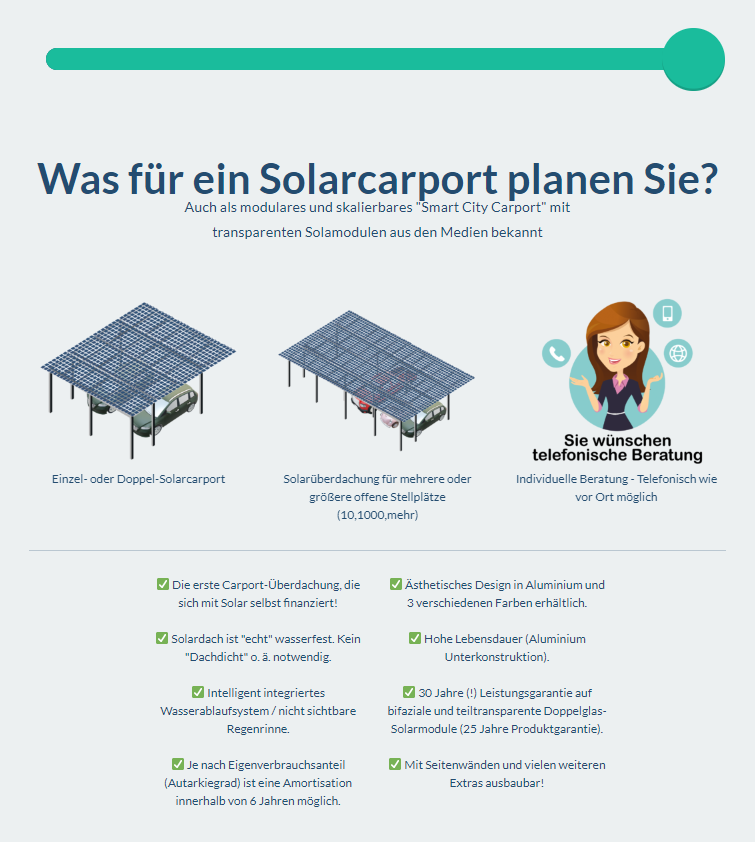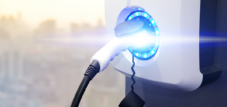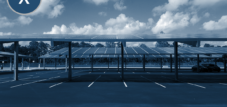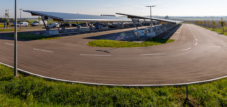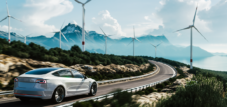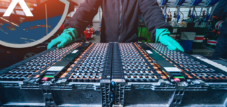Vehicle-to-grid concept and the urgency of a faster expansion of the charging infrastructure for electric cars in Germany
Language selection 📢
Published on: August 14, 2023 / Update from: August 14, 2023 - Author: Konrad Wolfenstein

The urgency of a faster expansion of the charging infrastructure for electric cars in Germany – Image: Scharfsinn|Shutterstock.com
An analysis of the demands of the Association of the German Automotive Industry (VDA) and the role of Hildegard Müller
The automotive industry is changing towards an electrified future. The German automotive industry is faced with the challenge of expanding the charging infrastructure for electric cars much more quickly. In order to achieve the federal government's ambitious goal of one million charging stations by 2030, VDA President Hildegard Müller emphasizes that the pace of expansion measures would have to be quadrupled in the last twelve months. The current rate of expansion would not be sufficient to close the gap between electric vehicles and charging infrastructure.
Growing need for charging stations and challenges
In January 2021, 14 electric cars and plug-in hybrids were added to a public charging station. According to the VDA there are now 22 vehicles. There are currently around 90,000 publicly accessible charging points in Germany. This makes it clear that Germany has a lot of catching up to do in this area. Although the expansion rate has increased in recent years, Müller calls for continued progress.
Increasing production and new registrations of electric cars
The past year was marked by a significant increase in the production, sales and new registrations of electric cars in Germany. Around 300,000 electric cars and plug-in hybrids were newly registered in the first half of the year, which corresponds to almost a quarter of all new registrations in June.
The role of infrastructure and power grid expansion
In addition to an improved charging infrastructure, VDA President Müller is also calling for the expansion of the electricity network. This step is seen as crucial for the success of electromobility. She emphasizes that there is a lot of catching up to do in this area. Müller warns that the power grid will become a bottleneck for electromobility.
Urgent need for accelerated expansion
The demands of the Association of the German Automotive Industry (VDA) and the voice of Hildegard Müller emphasize the urgent need for an accelerated expansion of the charging infrastructure and the power grid for electric cars in Germany. The current state of affairs shows a growing discrepancy between the increasing number of electric vehicles and the necessary charging infrastructure. The success of electromobility depends largely on a comprehensive and efficient infrastructure. In order to achieve the federal government's ambitious goals and advance electromobility in Germany, consistent expansion and modernization measures are essential.
The future of the German automotive industry lies in electromobility. To ensure a successful transition, the charging infrastructure must be massively expanded and the electricity network expanded. The voice of the VDA and Hildegard Müller makes it clear that these challenges must be addressed decisively in order to put electromobility in Germany on the fast track.
The Xpert.Solar solar carport planner
Solar parking spaces are a promising way to generate renewable energy while optimizing limited space requirements in cities and urban areas. However, there are actually some challenges that can complicate the introduction of such parking spaces.
One of the biggest hurdles is the high cost and planning effort associated with installing solar panels in parking lots. Not only must the cost of the solar panels themselves be taken into account, but also the cost of the infrastructure required to connect the panels to the grid. In addition, the space required for installing the solar modules must be precisely planned and coordinated to ensure effective use of the available space.
Another obstacle are bureaucratic hurdles and approval processes that can make it difficult to install solar panels in parking lots. Depending on the region or country, different rules and regulations may apply, which can complicate the approval and implementation process.
Despite these challenges, there is high demand for solar parking spaces as they represent an effective way to promote renewable energy while optimizing space requirements in urban areas. With careful planning and collaboration between the parties involved, the hurdles can be overcome to facilitate the introduction of such parking spaces.
➡️ We specialize in providing advisory and planning support for such solar carport projects and advancing their implementation.
➡️ With our solar carport planner we simplify the process.
➡️ We are there for you for the next steps and thus minimize costs and effort for you.
More about it here:
Electromobility as the future of the German automotive industry
The German automotive industry is facing profound change, driven by the increased focus on electromobility. The global trend towards more sustainable mobility solutions, increasing pressure to reduce emissions and technological advances in batteries have led to electric vehicles (EVs) being seen as central to the future of the automotive sector. In order to successfully shape this change, two crucial factors are of great importance: the expansion of the charging infrastructure and the expansion of the electricity network.
Charging infrastructure as the key to success
The availability of a comprehensive and efficient charging infrastructure is of central importance for the acceptance and spread of electric vehicles. In recent years, many cities and municipalities in Germany have already started to set up public charging stations. But in order to convince the broad masses of drivers of the advantages of electromobility, a massive expansion of the charging infrastructure is necessary. New technologies such as fast charging stations, which allow batteries to be charged in the shortest possible time, are being developed and offer a promising solution to the time dilemma when charging electric vehicles.
Challenges and progress in the expansion of the power grid
The increasing number of electric vehicles presents the power grid for challenges. The simultaneous load of a large number of vehicles could lead to overload at peak times. It is therefore necessary to expand the power grid in order to be able to cope with the additional demand for electricity. Advances in the field of intelligent energy management and the so-called “Vehicle-to-Grid” concept could help to deal with these challenges. In this way, electric vehicles can not only obtain electricity from the network, but also feed excess energy back into the network if they are not used, which contributes to stabilizing the power grid.
Economic opportunities and innovation potential
The switch to electromobility not only presents challenges, but also significant opportunities for the German economy. The development and production of electric vehicles requires high-quality batteries, electronics and software components, which can lead to new business areas and jobs. In addition, the demand for renewable energy needed to charge electric vehicles is increasing. This demand could help drive the expansion of renewable energy sources such as solar and wind energy, which in turn supports the energy transition.
Spirit of innovation and research funding
The transition to electric mobility requires continuous research and innovation to increase the efficiency of batteries, improve the range of electric vehicles and further reduce charging times. Germany has a strong research tradition in the automotive sector, and this expertise can be used to advance new technologies and solutions. Government programs and funding to support research and development in the field of electromobility are crucial to strengthening the innovative strength of the German automotive industry.
International cooperation and standards
The transformation towards electromobility is not an isolated process, but a global change. The development of international standards for charging infrastructure, battery technologies and grid integration is of great importance to ensure the interoperability of electric vehicles and charging infrastructure worldwide. The German automotive industry can benefit from active participation in international collaborations and partnerships in order to learn from each other and work together on a sustainable future.
The course has been set
The future of the German automotive industry undoubtedly lies in electromobility. A successful transition requires a comprehensive expansion of the charging infrastructure and the expansion of the electricity grid. These challenges offer not only technical, but also economic and innovative opportunities. With the right mix of research funding, international collaboration and industry commitment, Germany can take a leading role in the electric mobility revolution while contributing to reducing emissions and creating a sustainable mobility future.
Vehicle-to-grid concept: A bridge between electric vehicles and the power grid
The Vehicle-to-Grid (V2G) concept is an innovative technology that considers electric vehicles not only as a means of transport, but also as a flexible energy supplier and storage device for the power grid. This idea has the potential to facilitate the integration of renewable energy, improving grid stability while reducing costs for electric vehicle owners.
How does the vehicle-to-grid concept work?
With the vehicle-to-grid concept, electric vehicles can feed energy into and draw energy from the power grid. This is done via so-called bidirectional charging stations, which enable the vehicles not only to absorb energy, but also to feed excess energy back into the grid. The vehicles can thus serve as mobile energy storage devices that can supply electricity to the grid or absorb it from the grid when required.
Difference from bidirectional charging: More than just one direction
While the term “bidirectional charging” is often used synonymously with the V2G concept, there is a fine difference. Bidirectional shop generally refers to the ability of an electric vehicle to exchange energy in both directions with the charging station - both for charging the vehicle and for unloading into the power grid. Vehicle-to-grid, on the other hand, emphasizes the active role of the vehicle in the energy system by acting not only as a consumer, but also as an energy source for the network.
Potential benefits of the vehicle-to-grid concept
1. Integration of renewable energy
V2G can help balance the intermittent nature of renewable energies, such as solar and wind, by temporarily storing excess energy in vehicles and feeding it back into the grid when needed.
2. Grid stability and peak load management
Electric vehicles could serve as a buffer in times of high electricity demand to absorb load peaks and thus ensure grid stability.
3. Reduce consumer costs
Vehicle owners could benefit financially by drawing energy from the grid at times of low demand and feeding energy into the grid at peak times when electricity prices are higher.
Challenges and future prospects
Despite the promising potential of the V2G concept, there are still some challenges to be overcome. The technology requires careful coordination between energy suppliers, car manufacturers and network operators to ensure interoperability and smooth operations. Data protection and security aspects must also be taken into account as sensitive energy and usage data is exchanged.
The future prospects for V2G are nevertheless promising. Advances in battery technology, intelligent network infrastructure and increasing electrification of transport are contributing to the further development of this technology. Pilot projects and commercial V2G services are already being implemented in some regions of the world to test the concept in practice and demonstrate its benefits.
The evolution of electromobility
The vehicle-to-grid concept marks a significant step in the evolution of electromobility and the energy transition. By acting not only as consumers but also as active participants in the energy market, electric vehicles could help increase the sustainability of the power grid and improve the overall efficiency of the energy system. While challenges need to be overcome, current developments and experiments show that V2G could be a promising solution for a cleaner and more efficient energy future.



